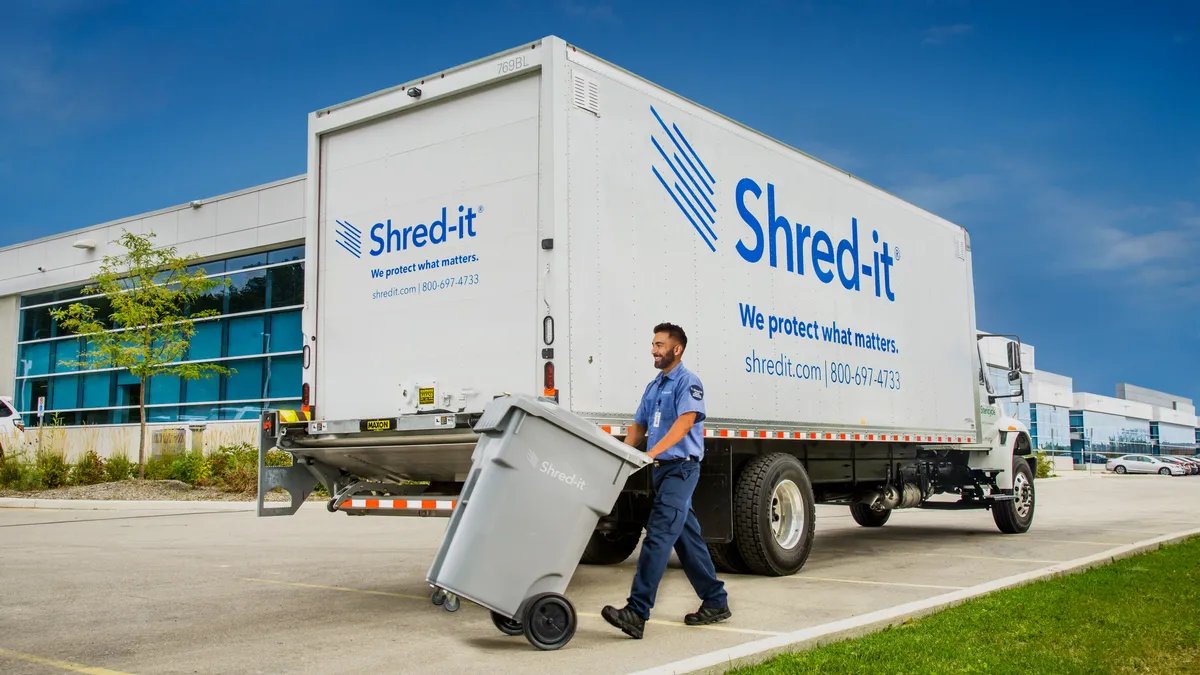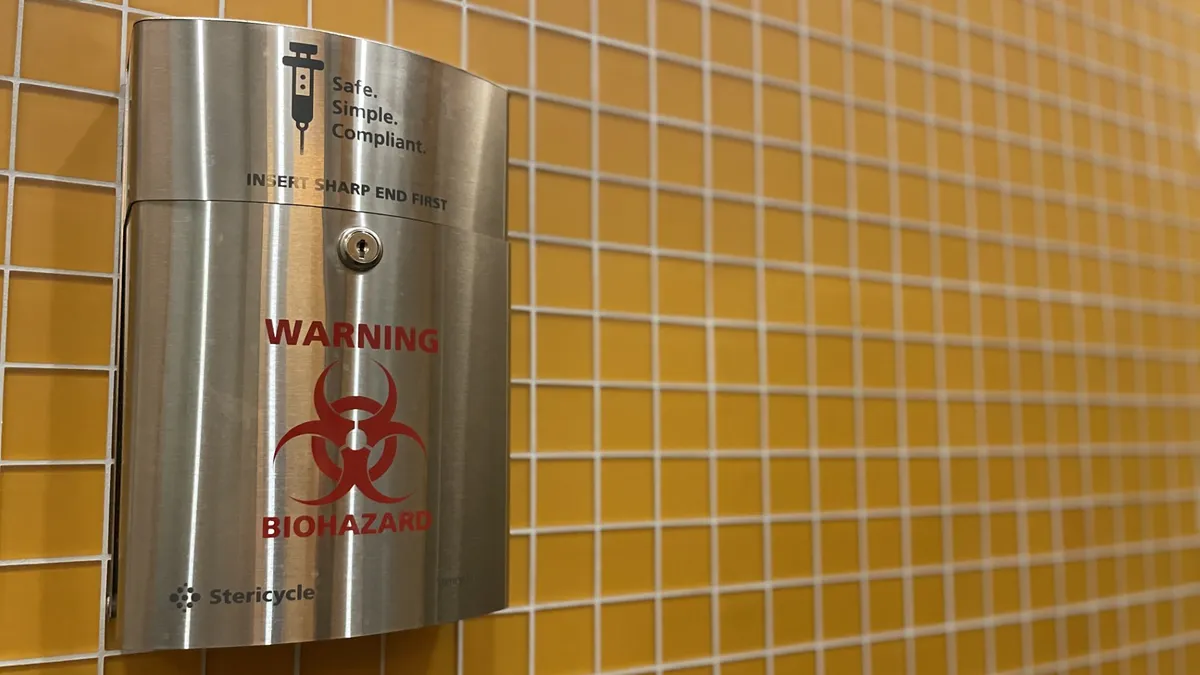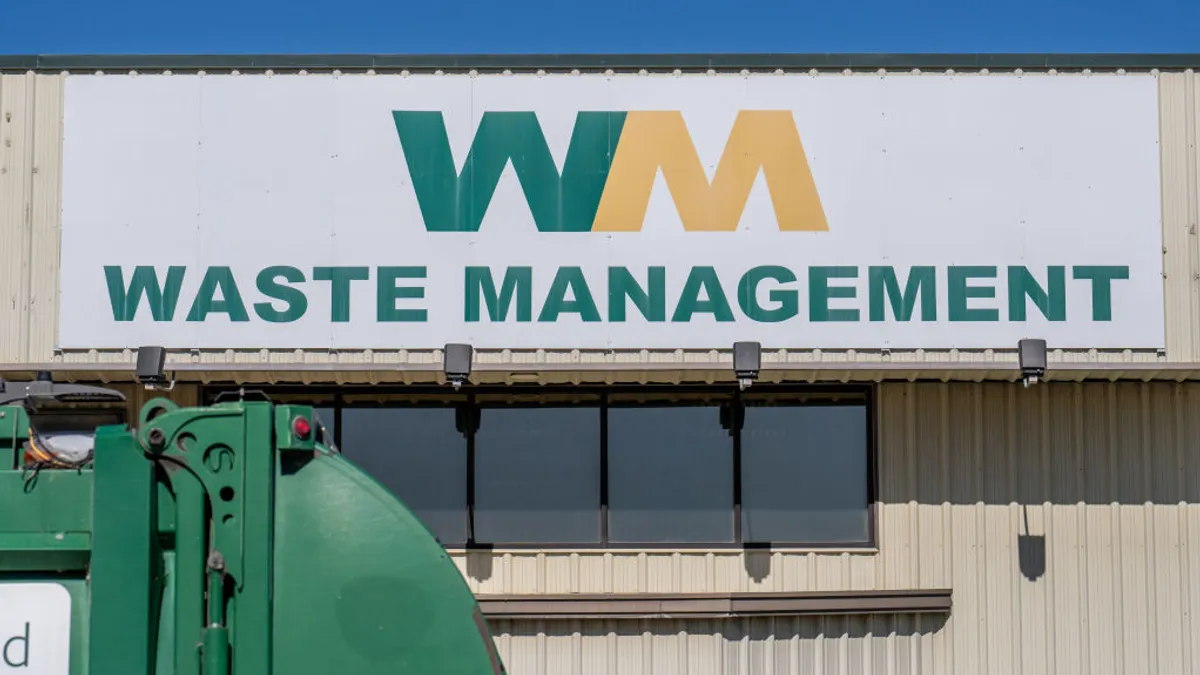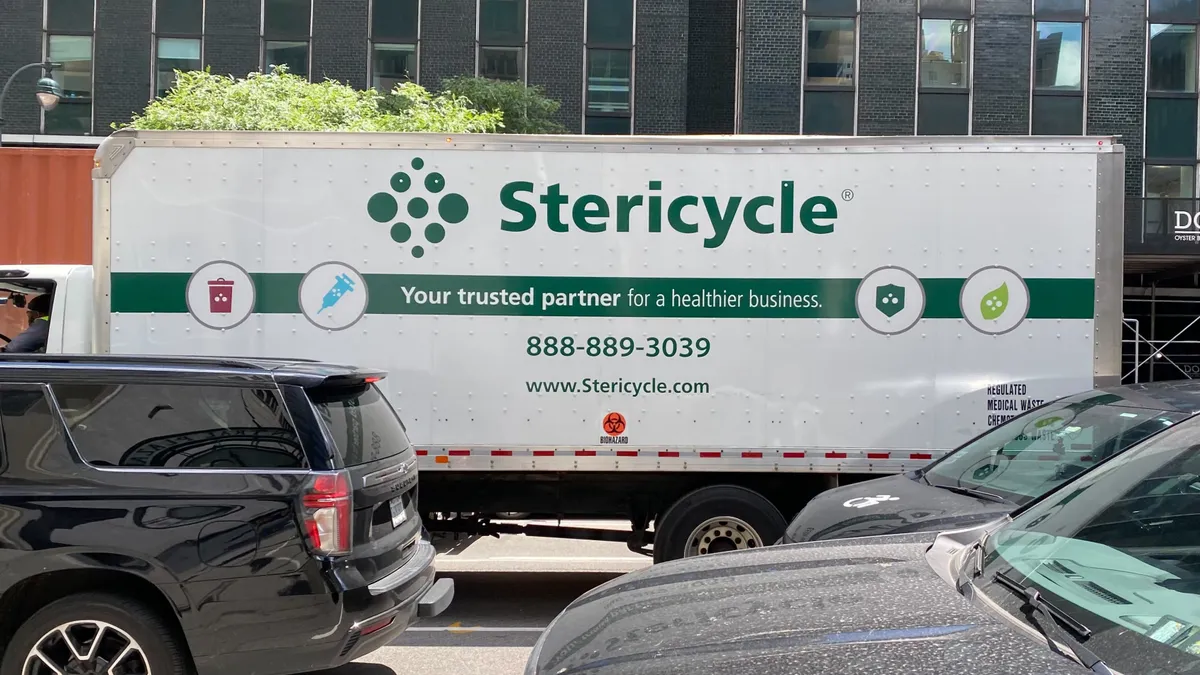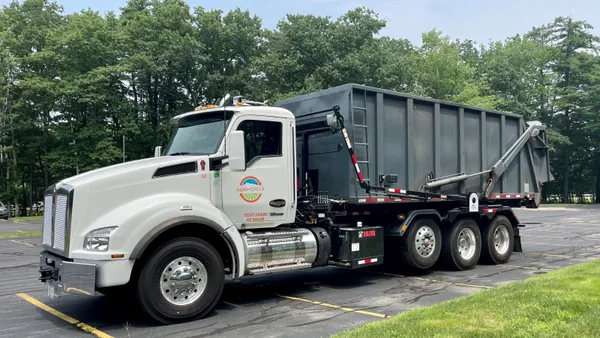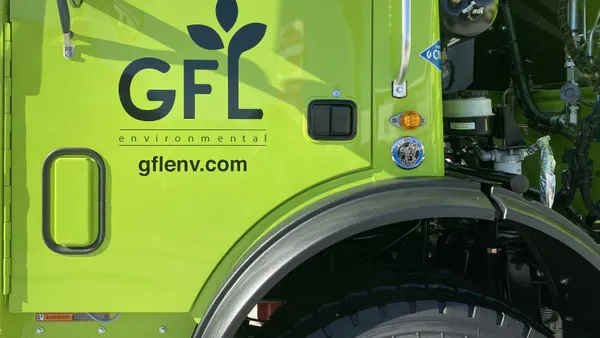After about a decade of interest, WM executives said the time was finally right to acquire Stericycle due to shared collection and disposal strengths and the opportunity to break into a fast-growing medical waste market.
“If you were to ask me what business do I want to be in right now I want to be in a medical business of some kind, because it's only getting bigger,” said WM CEO Jim Fish during the Stifel Cross Sector Insight Conference on Wednesday. Fish cited an industry estimate that medical services volumes could grow 5% to 6% over the next 10 years, compared with an estimated 1% to 2% growth in solid waste volumes over that same period.
The Stifel discussion comes a few days after the company announced it plans to acquire Stericycle for approximately $7.2 billion. The deal is expected to close as early as Q4, subject to regulatory approvals and Stericycle shareholder approvals. CFO Devina Rankin said the timeline estimate is based on the expectation that it will not receive a second request from the Department of Justice. WM expects the HSR filing to be submitted within 10 days of signing.
WM executives noted the strength of Stericycle’s balance sheet and recent business efficiency efforts, as well as WM’s stronger presence in the recycling sector compared to 10 years ago, making it better aligned to manage Stericycle’s shredding business.
A June 4 analysis by RBC Capital Markets said the acquisition is a logical next step for WM because its current medical waste business is driven mainly by partnerships with third parties. Some industry analysts also see the acquisition as a clearer way to navigate DOJ approval versus acquiring a traditional solid waste company.
WM has existing services for healthcare waste, though Fish describes it as a “small” segment. Rafael Carrasco, WM’s senior vice president of enterprise strategy, says WM aims to get its medical solid waste presence “up to par with what we have as far as share in some of the other segments like retail, like commercial property and so forth,” which WM could use to create cross-selling opportunities, he said.
Fish pointed out Stericycle has worked hard to improve efficiency and costs under the leadership of CEO Cindy Miller and CFO Janet Zelenka. The company has done 19 divestitures since 2019, including some of its international businesses over the last few years,*** which Fish sees as a favorable move partly because WM was not interested in acquiring businesses in certain countries abroad, he said.
The Stericycle acquisition does come with some international businesses, including in Europe. Though it’s too early to say what significance those might have for WM, executives said they plan to take a closer look to see if WM would be the right owner for such sectors.
Fish also praised Stericycle’s major rollout of a company-wide enterprise resource planning system meant to streamline company operations.
One of Stericycle’s major strengths is in its collection and disposal capabilities, Fish said, and that footprint overlaps with some of WM’s biggest geographic areas. Stericycle also has a “huge” routing and logistics network of about 5,200 routes. Its fleet is expected to be less expensive to maintain than some of WM’s vehicles because Stericycle mainly uses box trucks, which require less complex maintenance than heavy-duty trucks.
WM sees compatibility based on how the two companies approach their balance sheet, including their selling, general and administrative expenses, he said. WM had previously said it expects to realize about $125 million in annual cost synergies from the deal, with logistics and SG&A efficiencies contributing to that estimate. Stericycle and WM also now have comparable operating costs as a percent of revenue — about 64% and 60% respectively, he said.
“There's a big big opportunity for synergies there to bring what we do well — which is operations, efficiencies, routing and logistics — and then running the business in a lean manner at the SG&A lines,” he said.
Based on WM’s overall return on invested capital, Rankin expects the internal rate of return to outpace that of WM’s 2020 acquisition of Advanced Disposal Services — a $4.6 billion deal — by about 150 basis points.
The Stericycle acquisition “is a growth platform, a growth industry, a growth space, and we think there's momentum with all of the hard work that the existing leadership team has done in being able to capture that and move it forward with our expertise,” she said. Rankin said the deal is expected to minimally affect WM’s debt leverage, targeting about 18 months post-close to return to WM’s target debt leverage of 2.75 to 3 times, she said. WM has previously said it expects a short-term net debt-to-EBITDA ratio of approximately 3.4 times once the deal closes.
As for where Stericycle’s assets could fit into WM’s overall operations, Rankin said the company will likely separate regulated waste business as its own segment. Medical waste disposal and treatment is one of Stericycle’s major offerings, and it is in the process of building a new regulated waste incinerator in Nevada. Stericycle also owns a number of autoclaves, incinerators and transfer stations.
Carrasco said Stericycle’s industrial waste assets will align well with WM’s current business.
“We already have one of the top industrial hazardous waste businesses in the country, so this is an additive to that,” he said. “We have four hazardous waste landfills, we have deep well injection, so it just broadens the suite of services.”
Meanwhile, Stericycle’s secure information destruction business could be folded into WM’s recycling division. “It dovetails nicely with our recycling business, since it’s essentially a high-grade paper recycling business with a few more customer requirements,” Fish said.
The timing is right, he added, because WM is already in the process of building new MRFs and modernizing existing ones, giving WM the opportunity to potentially run shredded paper through some lines, he said.
Prices for high-grade office paper have declined over the last five years, though Carrasco said prices have stabilized somewhat since the height of the COVID-19 pandemic.
“It's a good moment to actually continue the journey that Stericycle has begun with fee-for-service as opposed to being heavily dependent on the commodity price. They've done a great job there … We feel like we actually have a lot of experience having taken our own recycling business into a fee-for-service model, so there's opportunity there.”
Fish also addressed a recent Reuters article, which cited anonymous sources, that said WM could be exploring the sale of certain RNG assets. WM has repeatedly described the information in the story as a “rumor.”
“It’s an option for us,” he said, but added that WM’s main focus right now is building 20 plants. About 80% of its capital expenditure budget for 2024 is anticipated to go toward the project, including opening five such plants this year, he said.



